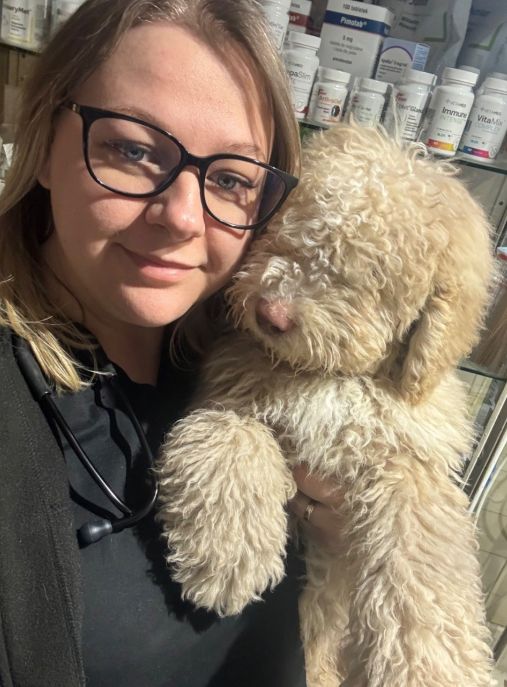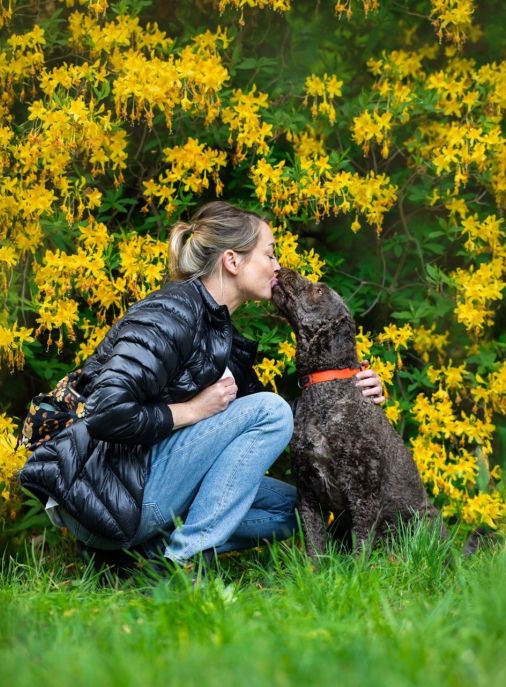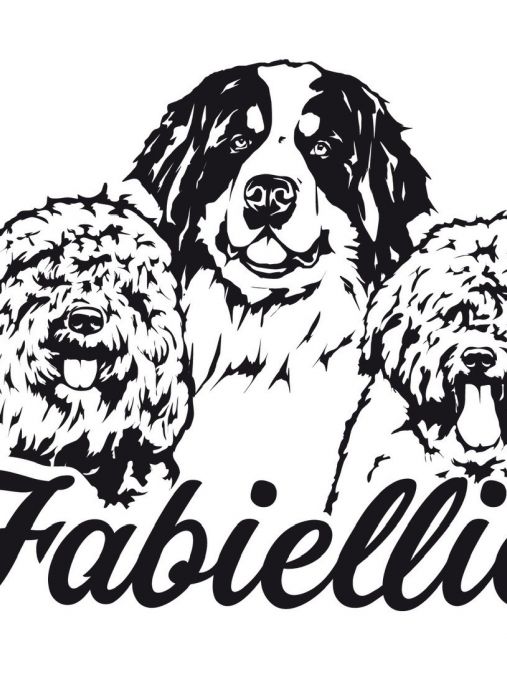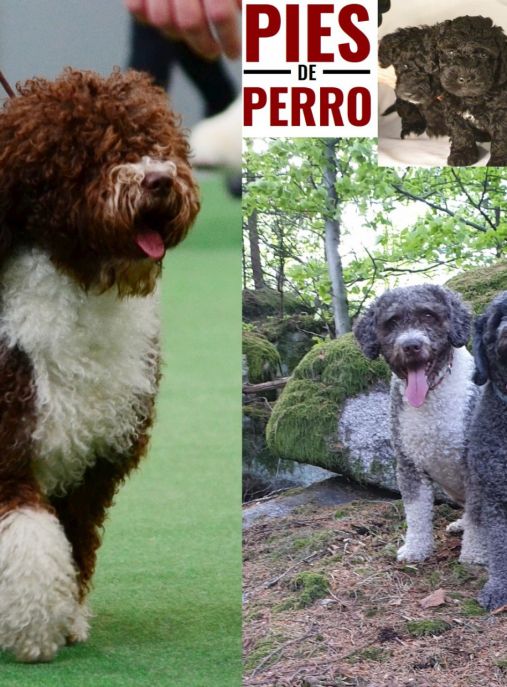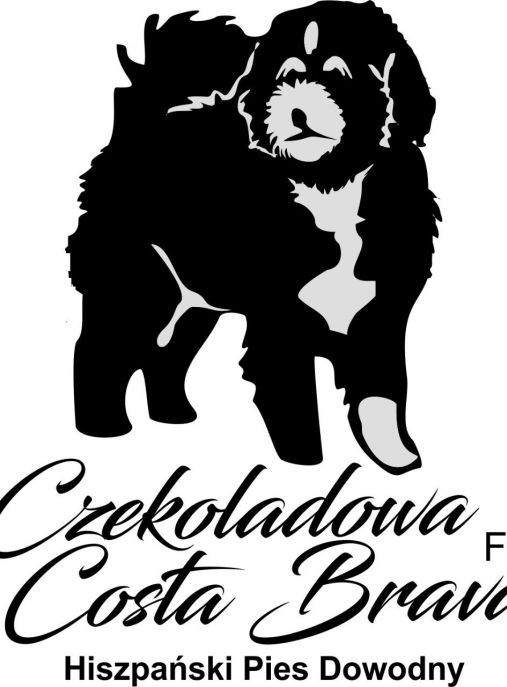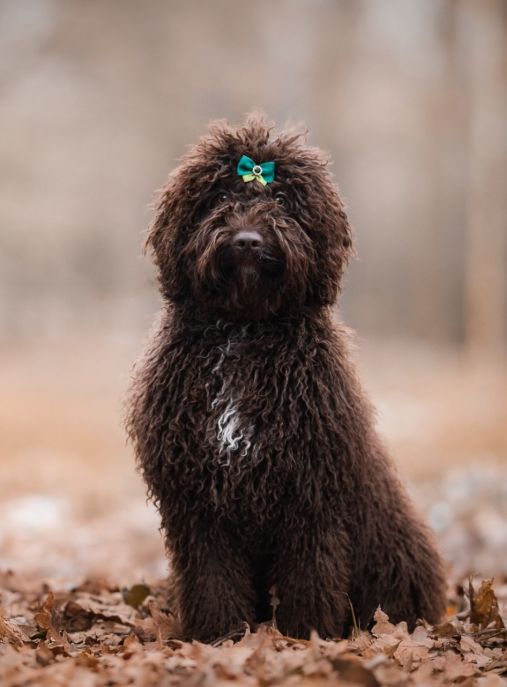The Spanish Water Dog, also known as the Perro de Agua Español, is a versatile and intelligent breed that has been a loyal companion to humans for centuries. This breed is highly regarded for its exceptional working abilities, adaptability, and distinctive appearance. With a rich history and a range of unique characteristics, the Spanish Water Dog has become increasingly popular among dog enthusiasts worldwide.
Originating from Spain, the Spanish Water Dog has a long and fascinating history. It is believed that this breed has ancient roots, dating back to the Middle Ages. These dogs were primarily used by Spanish shepherds and fishermen for various tasks, such as herding livestock, guarding property, and retrieving items from the water. Their exceptional swimming skills and ability to work in diverse terrains made them invaluable to their owners.
According to the FCI (Fédération Cynologique Internationale) typology, the Spanish Water Dog belongs to Group 8 - Retrievers, Flushing Dogs, and Water Dogs. This group includes breeds that are skilled in water work, such as retrieving game and assisting in hunting activities. The Spanish Water Dog is specifically classified under Section 3 - Water Dogs.
The Spanish Water Dog is a versatile breed that can adapt to various roles and environments. They excel in activities such as obedience, agility, and search and rescue. Additionally, their hypoallergenic coat makes them suitable for individuals with allergies, as they shed minimally. This breed is highly trainable, intelligent, and eager to please, making them an excellent choice for both experienced and novice dog owners.
In terms of physical characteristics, the Spanish Water Dog is a medium-sized breed with a well-muscled and athletic build. The average weight of a male Spanish Water Dog ranges from 40 to 50 pounds (18 to 22.5 kilograms), while females typically weigh between 31 to 40 pounds (14 to 18 kilograms). The height of these dogs varies between 17 to 20 inches (43 to 51 centimeters) for males and 15 to 18 inches (38 to 46 centimeters) for females.
One of the most distinctive features of the Spanish Water Dog is its unique coat. The breed's coat is dense, curly, and woolly, providing excellent protection against the elements. The coat can come in a variety of colors, including black, brown, beige, and white. It requires regular grooming to prevent matting and maintain its characteristic texture.
The life expectancy of the Spanish Water Dog is typically between 12 to 15 years, although some individuals have been known to live even longer with proper care. This breed is generally healthy, but like all dogs, they may be prone to certain health conditions. Some of the potential health issues that can affect the Spanish Water Dog include hip dysplasia, progressive retinal atrophy (PRA), and allergies. Regular veterinary check-ups, a balanced diet, and regular exercise can help ensure the overall well-being of these dogs.
In addition to their working abilities and physical traits, the Spanish Water Dog possesses a number of interesting characteristics. They are known for their strong bond with their families and are often described as affectionate, loyal, and protective. These dogs thrive on human companionship and require plenty of mental and physical stimulation to prevent boredom and destructive behavior.
The Spanish Water Dog is an excellent choice for active individuals or families who can provide them with the exercise and mental stimulation they require. They are well-suited for various living situations, including apartments, as long as they receive regular exercise and mental enrichment. However, potential owners should be prepared to invest time and effort into training and socializing these dogs to ensure they become well-rounded and obedient companions.
In conclusion, the Spanish Water Dog is a remarkable breed with a rich history and a range of unique characteristics. Their versatility, intelligence, and distinctive appearance make them a popular choice among dog enthusiasts. Whether as a working dog or a beloved family pet, the Spanish Water Dog continues to captivate the hearts of many with its exceptional abilities and unwavering loyalty.
The Spanish Water Dog, also known as the Perro de Agua Español, is a versatile and intelligent breed with a unique character. These dogs have a distinct appearance, with their curly or wavy waterproof coat and expressive eyes. However, it is their character that truly sets them apart.
Spanish Water Dogs are known for their friendly and affectionate nature. They are incredibly loyal and form strong bonds with their family members. They thrive on human companionship and are happiest when they are included in all family activities. This breed is particularly good with children and can be a great playmate and protector for them.
One of the defining characteristics of Spanish Water Dogs is their high energy level. They are an active breed that requires regular exercise to keep them physically and mentally stimulated. Daily walks, playtime, and interactive games are essential to prevent boredom and destructive behavior. These dogs excel in various dog sports such as agility, obedience, and even water trials, thanks to their excellent swimming abilities.
While Spanish Water Dogs are generally friendly, they can be reserved with strangers. They have a natural instinct to protect their family and property, making them excellent watchdogs. Early socialization is crucial to ensure they are comfortable and well-behaved around unfamiliar people and animals. Introducing them to different environments, sounds, and experiences from a young age will help them develop into confident and well-rounded dogs.
Training a Spanish Water Dog requires a patient and consistent approach. They are highly intelligent and eager to please, making them quick learners. Positive reinforcement techniques, such as rewards and praise, work best with this breed. Harsh training methods or punishment can lead to fear or aggression, which is not characteristic of their nature. Early obedience training and ongoing mental stimulation are essential to keep their active minds engaged.
The curly or wavy coat of the Spanish Water Dog requires regular grooming to keep it in good condition. Their coat is hypoallergenic and does not shed, making them a suitable choice for individuals with allergies. Regular brushing is necessary to prevent matting and tangling, and occasional trimming may be required to maintain a neat appearance. Bathing should be done as needed, and their ears should be checked regularly to prevent infections.
In conclusion, Spanish Water Dogs are friendly, loyal, and active companions. They thrive on human interaction and require regular exercise and mental stimulation. With proper training and socialization, they can be well-behaved and adaptable in various environments. Their unique coat requires regular grooming, but their hypoallergenic nature makes them a great choice for allergy sufferers. If you are looking for a versatile and devoted companion, the Spanish Water Dog may be the perfect breed for you.
The Spanish Water Dog is a beautiful and intelligent breed that requires specific care to ensure their health and happiness. Here is an extensive description of the recommended care for Spanish Water Dog dogs, along with tips on what to do and what not to do when caring for them.
Grooming:
Spanish Water Dogs have a unique curly or wavy coat that requires regular grooming to prevent matting and keep it in good condition. Brush their coat at least once a week to remove any tangles or debris. Regular bathing is also necessary to keep their coat clean and healthy. However, avoid over-bathing as it can strip the natural oils from their skin.
Trimming their coat is essential to maintain their appearance and prevent excessive hair growth. It is recommended to have a professional groomer trim their coat every 6-8 weeks. Regularly check their ears for any signs of infection and clean them gently to prevent any buildup of wax or debris.
Exercise:
Spanish Water Dogs are an active breed that requires regular exercise to keep them physically and mentally stimulated. Aim for at least 60 minutes of exercise per day, which can include walks, runs, playtime, and swimming. These dogs have a natural affinity for water, so providing opportunities for swimming is highly beneficial.
Training:
These dogs are highly intelligent and eager to please, making them relatively easy to train. Start training them from an early age to establish good behavior and obedience. Use positive reinforcement techniques such as treats, praise, and rewards to motivate them. Socialization is also crucial, so expose them to different people, animals, and environments to ensure they grow up to be well-rounded dogs.
Nutrition:
Provide a balanced and nutritious diet to maintain their overall health. Consult with a veterinarian to determine the appropriate portion sizes and feeding frequency based on their age, weight, and activity level. Avoid overfeeding, as Spanish Water Dogs are prone to obesity. Additionally, ensure they have access to fresh water at all times.
Healthcare:
Regular veterinary check-ups are essential to monitor their overall health and address any potential issues. Vaccinations, parasite prevention, and dental care should be a part of their routine healthcare. Spanish Water Dogs are generally healthy, but they can be prone to certain genetic conditions such as hip dysplasia and progressive retinal atrophy. Regular exercise, a balanced diet, and maintaining a healthy weight can help minimize the risk of these conditions.
What to do:
- Provide regular exercise and mental stimulation to keep them happy and healthy.
- Establish a consistent grooming routine to maintain their coat and prevent matting.
- Start training and socialization from an early age to ensure good behavior.
- Feed them a balanced diet and provide fresh water at all times.
- Schedule regular veterinary check-ups and vaccinations.
What not to do:
- Neglect their grooming needs, as it can lead to matting and skin issues.
- Leave them alone for extended periods, as they thrive on human companionship.
- Use harsh training methods or punishment, as it can damage their trust and confidence.
- Overfeed or provide unhealthy treats, as it can lead to obesity and related health issues.
- Skip regular veterinary check-ups, as early detection of health problems is crucial.
In conclusion, Spanish Water Dogs require regular grooming, exercise, training, and a balanced diet to thrive. By following these tips and providing them with the care they need, you can ensure a happy and healthy life for your Spanish Water Dog.
The Spanish Water Dog, known for its distinctive appearance and versatile nature, exhibits a wide range of colors that add to its charm and allure. While the breed standard allows for various coat colors, there is one common color that is often associated with these remarkable dogs.
The most prevalent color seen in Spanish Water Dogs is a rich and lustrous shade of black. This deep black hue is often described as intense and velvety, giving the dog an elegant and regal appearance. The black coat is typically uniform throughout the body, with no markings or variations in color.
The black color of the Spanish Water Dog's coat is not only visually striking but also serves a practical purpose. It provides excellent camouflage, allowing the dog to blend seamlessly into its surroundings, whether it be dense forests, rocky terrains, or even the dark waters they were originally bred to work in.
The texture of the black coat is another noteworthy feature. Spanish Water Dogs have a unique coat that is dense, curly, and woolly in texture. This curly coat not only adds to their overall appeal but also serves as protection against the elements, keeping them warm and dry even in wet conditions.
In addition to the solid black coat, Spanish Water Dogs can also have variations in color that add a touch of individuality. Some dogs may have small patches of white or gray scattered throughout their black coat, creating a striking contrast. These markings are usually found on the chest, paws, or face, adding a touch of character to their appearance.
It is important to note that while black is the most common color seen in Spanish Water Dogs, the breed standard also allows for other colors. These can include shades of brown, beige, and even white. However, these colors are less frequently seen and are considered less desirable in show dogs.
In conclusion, the common color of Spanish Water Dogs is a deep and intense black, which is both visually appealing and functional. This black coat, along with its curly texture, provides these dogs with a unique and striking appearance. Whether seen in its solid form or adorned with small patches of white or gray, the black coat of the Spanish Water Dog is a testament to its beauty and versatility.
The Spanish Water Dog (SWD) is a robust and hardy breed known for its excellent health. With proper care and attention, these dogs can live long and healthy lives. However, like all breeds, they are prone to certain health issues that owners should be aware of.
One of the most common health concerns in SWDs is hip dysplasia. This is a genetic condition where the hip joint doesn't develop properly, leading to pain, lameness, and arthritis. To minimize the risk of hip dysplasia, it is crucial to choose a reputable breeder who conducts hip screenings on their breeding dogs. Regular exercise, a balanced diet, and maintaining a healthy weight can also help prevent or manage this condition.
Another common health issue in SWDs is progressive retinal atrophy (PRA). PRA is a degenerative eye disease that leads to vision loss and, in severe cases, blindness. Responsible breeders will conduct eye screenings to ensure their breeding dogs are free from PRA. Regular eye check-ups with a veterinarian are essential to catch any signs of PRA early on.
Like many other breeds, SWDs can also suffer from allergies. These can manifest as skin irritations, itching, and ear infections. Allergies can be caused by various factors such as food, environmental allergens, or flea bites. Identifying and eliminating the allergen is crucial to managing allergies. Regular grooming, including brushing and bathing, can help keep the skin healthy and reduce the risk of allergies.
Another health concern in SWDs is epilepsy. Epilepsy is a neurological disorder characterized by seizures. While the exact cause of epilepsy is often unknown, it is believed to have a genetic component. If a SWD has a history of epilepsy in their lineage, it is important to inform the breeder and monitor the dog closely for any signs of seizures. Medication can be prescribed by a veterinarian to manage epilepsy and reduce the frequency and severity of seizures.
To ensure the overall health of SWDs, regular veterinary check-ups are essential. Vaccinations, parasite prevention, and dental care should be part of their routine healthcare. A balanced diet tailored to their specific needs, including high-quality dog food, is crucial for their overall well-being. Regular exercise, mental stimulation, and socialization are also important for their physical and mental health.
In conclusion, the Spanish Water Dog is generally a healthy breed, but they can be prone to certain health issues such as hip dysplasia, PRA, allergies, and epilepsy. Responsible breeding practices, regular veterinary care, a balanced diet, and proper exercise and grooming can help ensure the health and well-being of these wonderful dogs.
The Spanish Water Dog is a versatile and active breed known for its intelligence, agility, and strong work ethic. To ensure their overall health and well-being, it is crucial to provide them with a well-balanced and nutritious diet. Proper nutrition plays a vital role in supporting their energy levels, maintaining a healthy weight, promoting a shiny coat, and supporting their overall immune system.
When it comes to feeding a Spanish Water Dog, it is important to choose high-quality dog food that meets their specific nutritional needs. Look for a dog food that contains a high percentage of animal-based protein as the primary ingredient. This is essential for their muscle development and overall growth. Additionally, the food should contain a moderate amount of healthy fats, such as omega-3 and omega-6 fatty acids, which promote a healthy coat and skin.
It is recommended to feed Spanish Water Dogs twice a day, dividing their daily portion into two meals. This helps in preventing bloating and aids in better digestion. The exact amount of food will depend on factors such as age, weight, activity level, and metabolism. It is always best to consult with a veterinarian to determine the appropriate portion size for your individual dog.
In addition to commercial dog food, it is beneficial to include fresh, whole foods in their diet. Lean meats like chicken, turkey, or beef can be added as a protein source. Cooked eggs, cottage cheese, and plain yogurt are also excellent sources of protein. These foods can be given as occasional treats or mixed with their regular food to enhance the taste and nutritional value.
Fruits and vegetables are also important for a Spanish Water Dog's diet. They provide essential vitamins, minerals, and fiber. Some safe options include carrots, green beans, sweet potatoes, apples, and blueberries. However, it is important to avoid feeding them grapes, raisins, onions, garlic, and avocados, as these can be toxic to dogs.
While it is tempting to share human food with your Spanish Water Dog, it is important to avoid feeding them certain foods. Chocolate, caffeine, alcohol, and foods high in sugar or salt should never be given to dogs, as they can be toxic and lead to serious health issues.
Proper hydration is also crucial for a Spanish Water Dog's overall health. Always ensure that fresh, clean water is readily available for them to drink throughout the day.
Lastly, regular exercise is essential for a Spanish Water Dog's overall well-being. Along with a nutritious diet, they require daily physical activity to burn off excess energy and maintain a healthy weight. Engage them in activities such as swimming, running, playing fetch, or participating in dog sports to keep them mentally and physically stimulated.
In conclusion, providing a Spanish Water Dog with a well-balanced and nutritious diet is essential for their overall health and longevity. Choose high-quality dog food, include fresh whole foods, and avoid harmful substances. Remember to consult with a veterinarian to determine the specific dietary needs of your Spanish Water Dog, as individual requirements may vary. With proper nutrition and regular exercise, you can ensure that your Spanish Water Dog thrives and leads a healthy, happy life.









